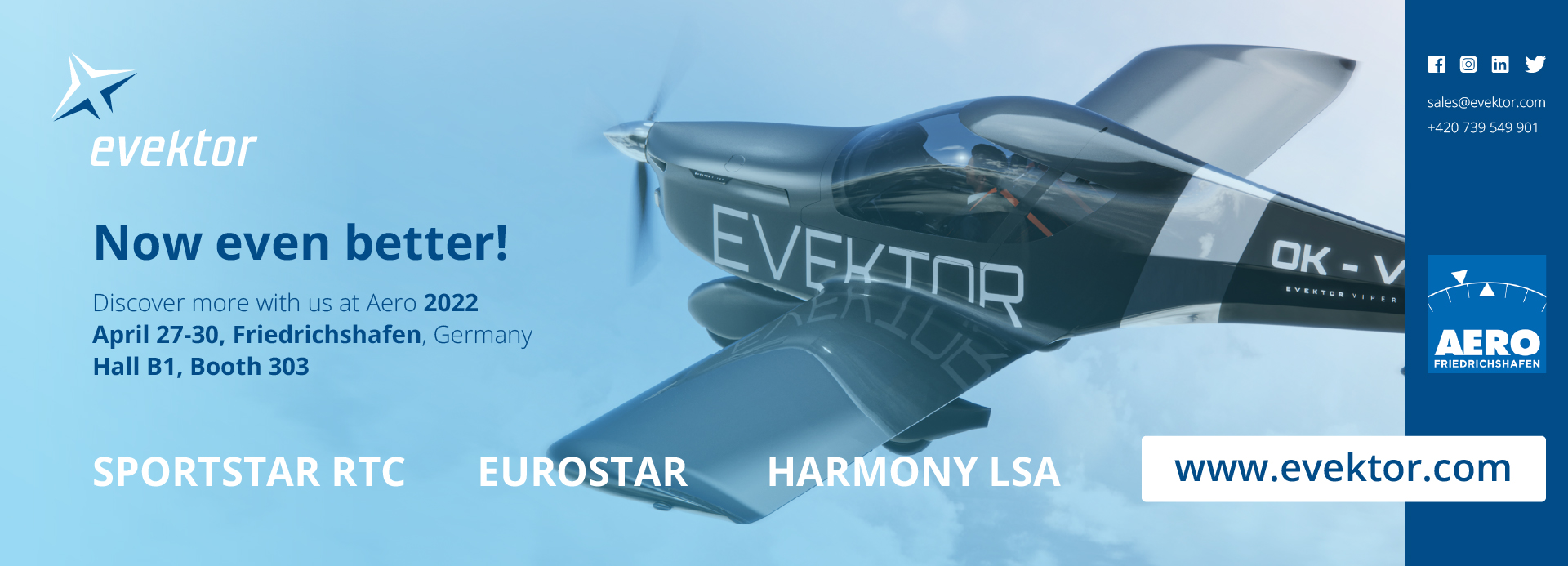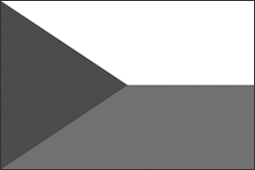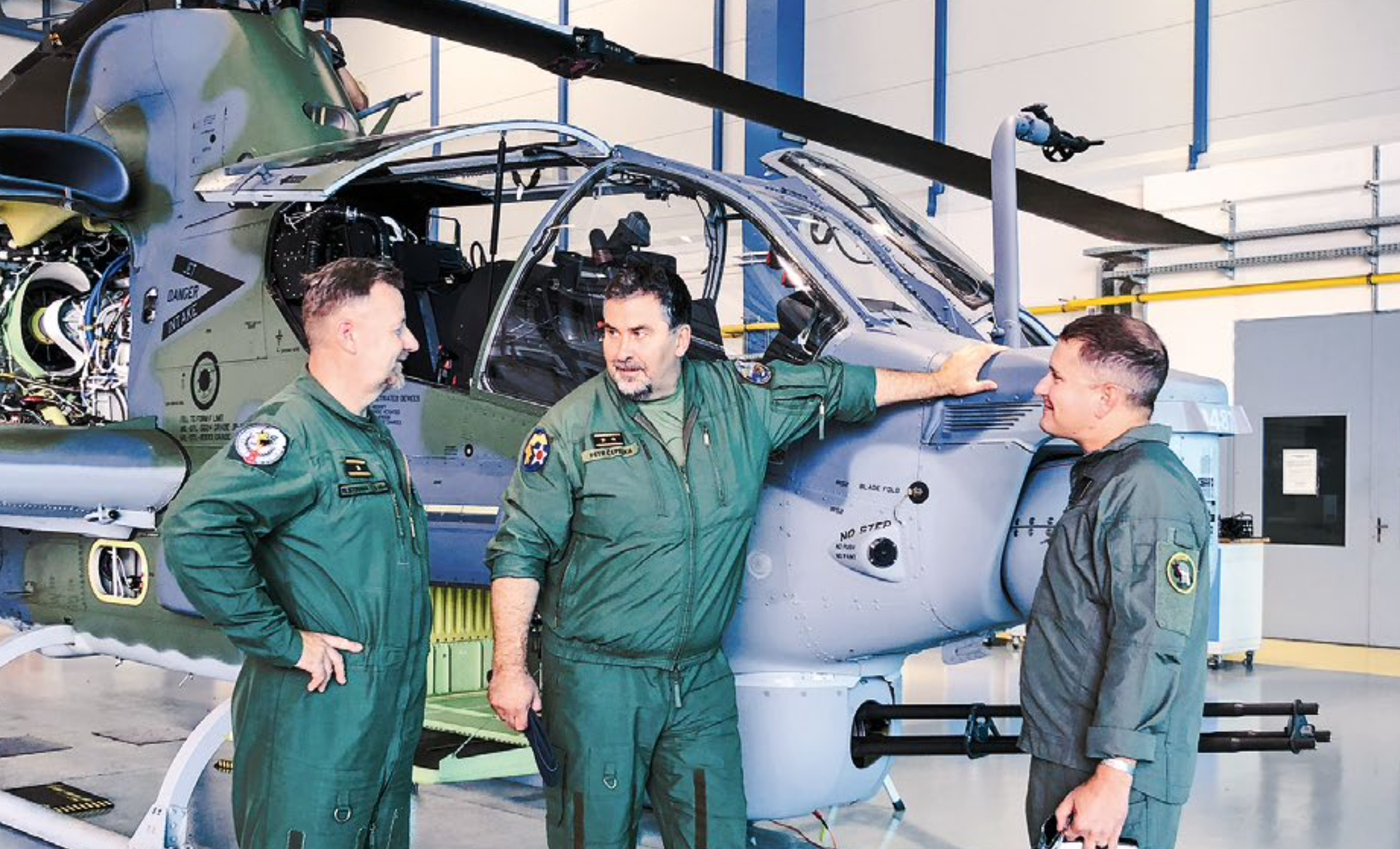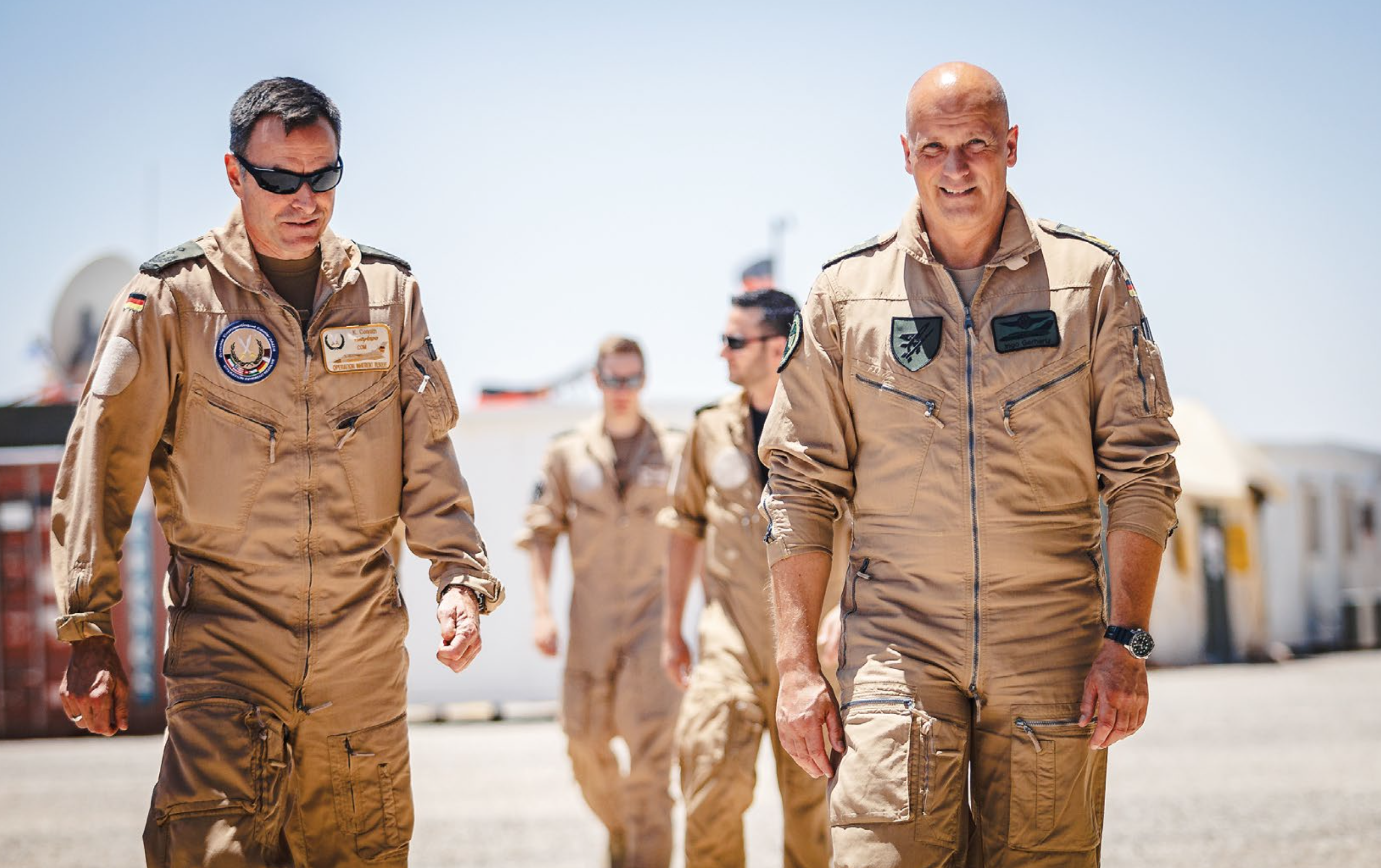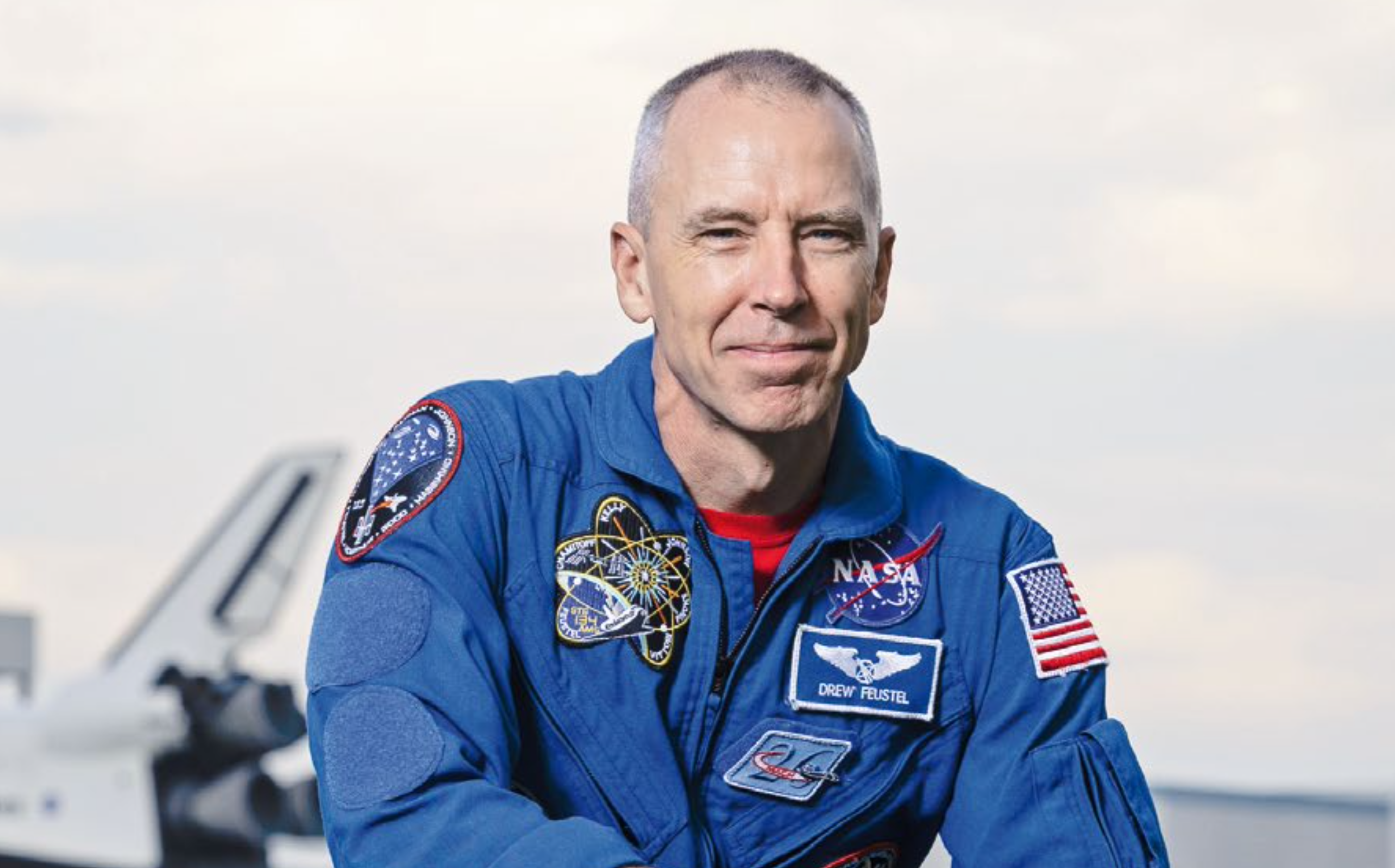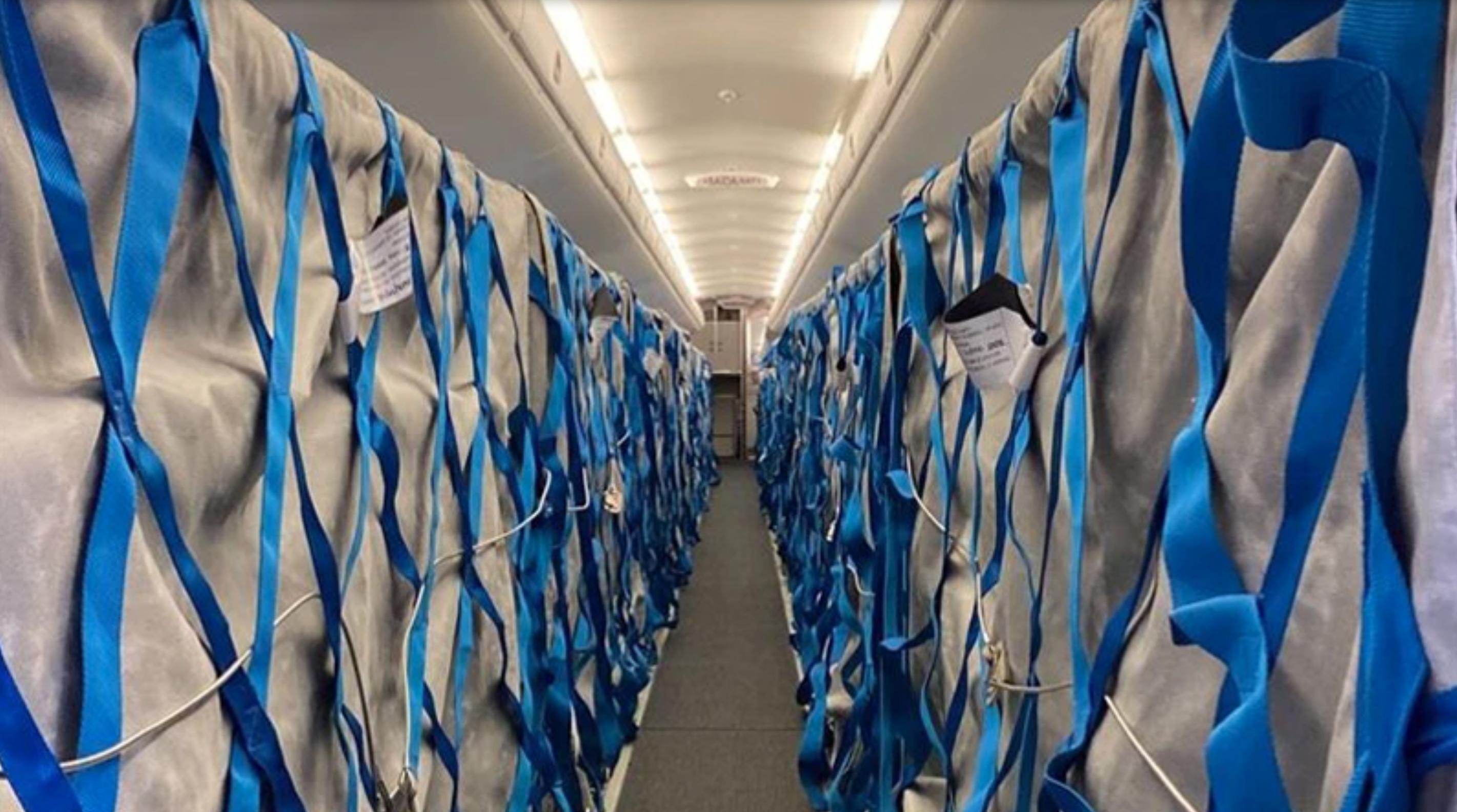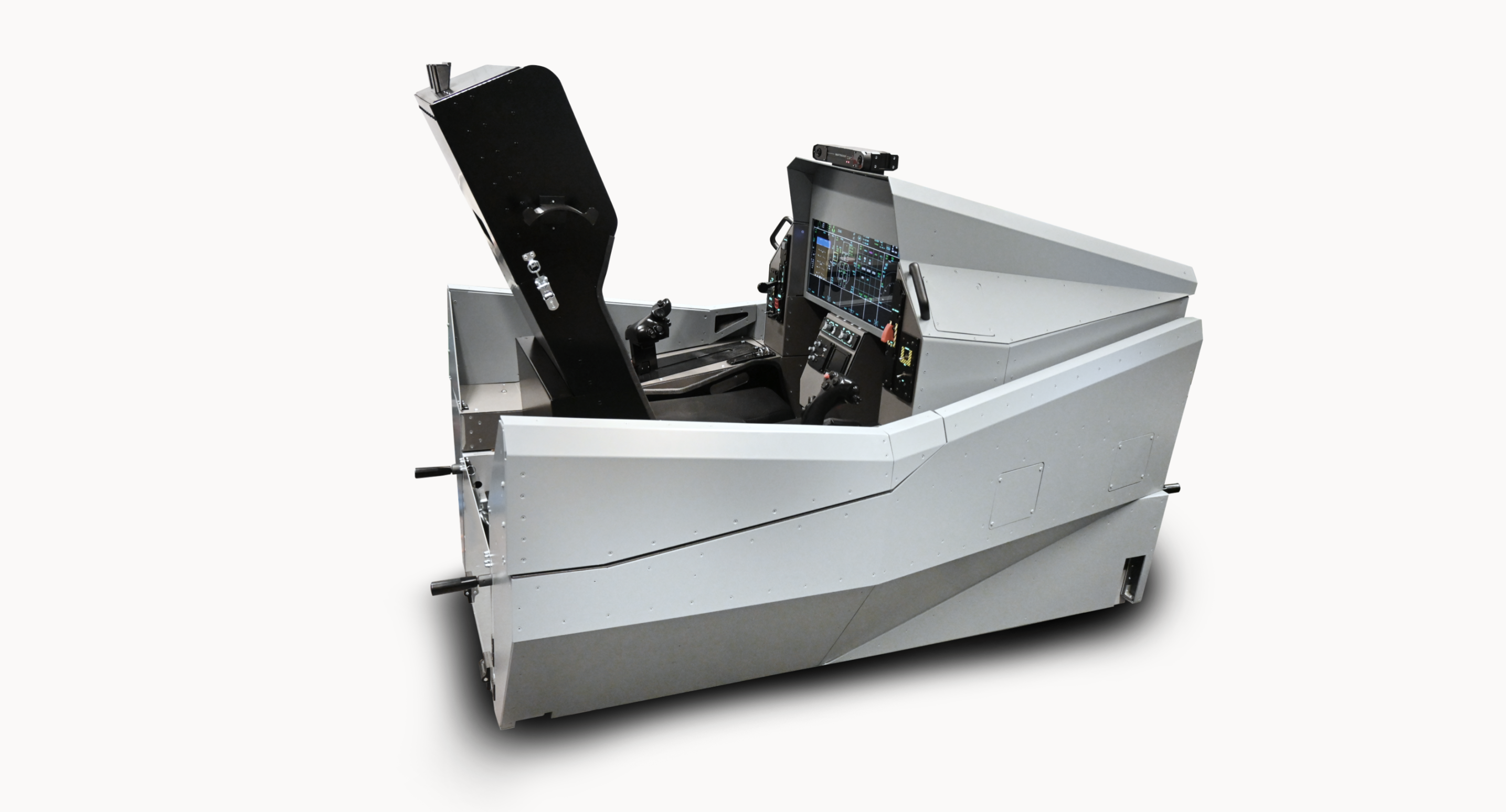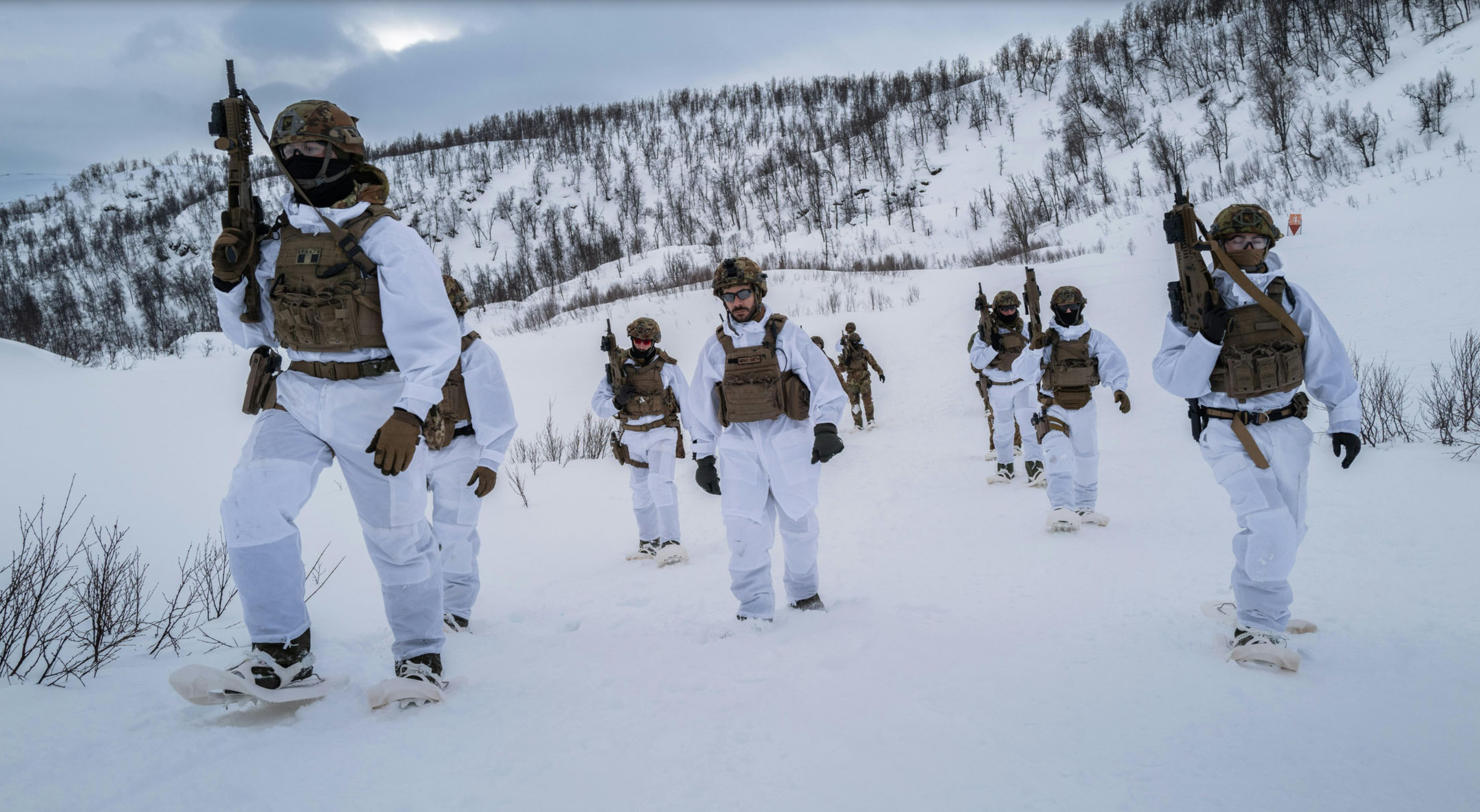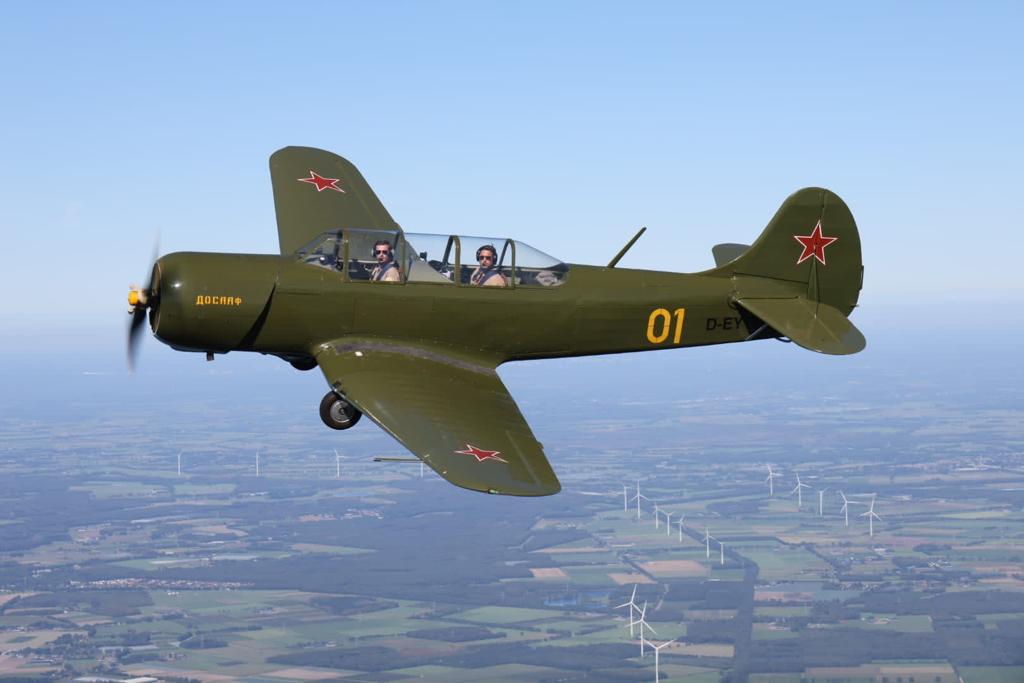The in-flight rescue of pilots became a topic from the very start of war aircraft deployment. Dogfights, often resulting in a shot-down of one plane, usually called for the pilot’s bailout out of the cockpit. And while with the early biplanes the task was easy – open the canopy, unstrap from the seat and jump out – the first jets introduced to the service presented a challenge. The flight speed called for an automatic solution with the ability to overcome the airflow-generated pressure, which prevents pilots from a manual bailout. The solution is called an ejection seat, and it saved the lives of more than 13,000 pilots worldwide to date.
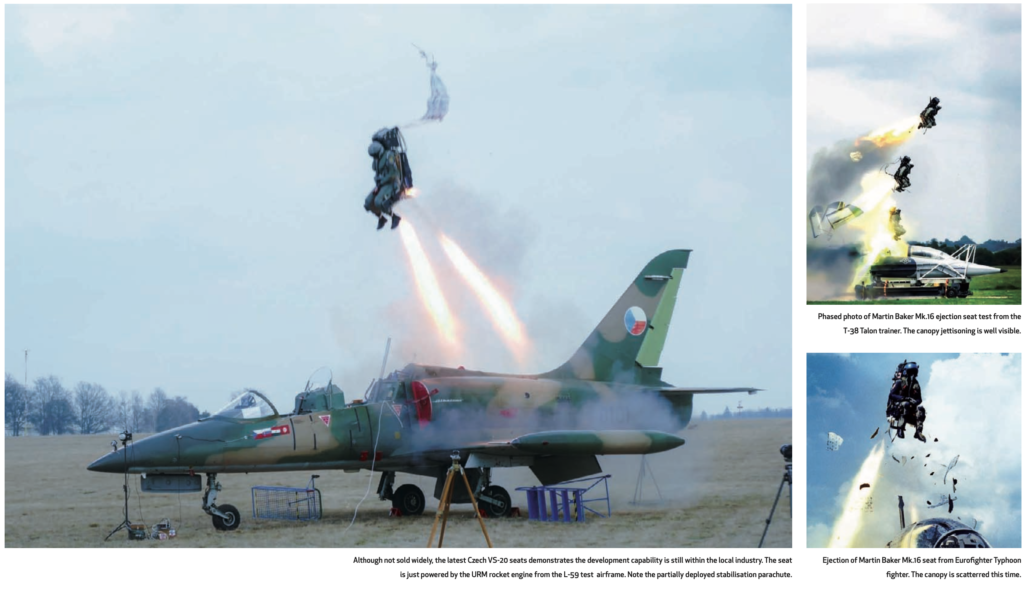
Since the Germans introduced the very first spring-powered ejection seats during WWII, the technology took a giant leap forward. The number of companies involved in seat development and testing has dropped over the subsequent years and, instead, airplane OEMs specialized seat companies captured the market. Currently, there are ejection seat manufacturers in the USA (Collins Aerospace), UK (Martin Baker), Russia (NPP Zvedza), China (Aerospace Life-support Industries) and the Czech Republic (Aero Vodochody Aerospace and Zlin Aircaft). As far as the market structure goes, the most dominant provider is the UK-based company Martin Baker, occupying just over fifty percent of the market. The remaining positions are held by Collins Aerospace and NPP Zvezda, with the Chinese manufacturer mostly responsible for the domestic market and the Czech companies playing a very local role with seats connected with out-of-production planes only (although some rebuilds were equipped with newly built seats). For the variety of ejection seat-equipped planes, the seat selection is very limited.
The UK OEM provides a wide variety of seats, a range called Mk.10 to Mk.18 (earlier models are not in use anymore) usually heavily customized for a particular aircraft and may be considered an industry benchmark. One can find those in the latest fighters such as F-35, European fighters such as JAS-39 Gripen and Eurofighter Typhoon, or training aircraft like L-39NG or Italian M-346. The company is rightfully considered ejection systems industry leader, with 7,650 lives saved since its first seats were introduced. Indeed, such primacy can be hardly overcome by any rival. The US Collins seat called ACES can be found in F-15, F-16, F-22 or B-2 airplanes. Due to the popularity of F-15 and F-16, the ACES seats also became very successful. Russian seats such as K-36 from Zvezda company became popular after unintentional ejections during spectacular air show crashes in the early 1990s and still present the only option for all Russian planes, regardless of their OEM. The Chinese HTY-5 seats, heavily influenced by Martin Baker types originally delivered to China in 1980s and 1990s, are equipping domestic fighters and were also used in some F-7 fighters (unlicensed copy of MiG-21). The Czech seat VS-2 is now used only in L-159 type, as the subsonic character of the seat and its unique logistics footprint make it less interesting for other plane makers.
Technical aspects
The seat itself is just the core of the rescue system. For a pilot to be ejected, several steps have to occur. At first, the ejection path has to be cleared, either in the form of a canopy jettison or its transparency scattering. The jettison is usually used with many types such as F-16 or F-18, where the transparency is so tough that the detonating cord might not be able to cut through it. So, the whole canopy with frame and glass in it is jettisoning by means of pyrotechnic cartridges. Should the glass be less thick, the canopy fragmentation used is one known from many training planes, including the latest L-39NG or BAE Hawk. The canopy transparency is scattered by an explosive cord cutting into small pieces. Should the ejection path be clear, the telescopic cartridge seat gun is activated, and the seat is elevated above the cockpit. The elevation is preceded by a proper automatic strapping of pilots via many mechanically, pyrotechnically or electrically powered reels (shoulder and lap harnesses are tightened, the legs are restrained by special ropes or hands are restrained, etc). Once the seat is above the cabin, the rocket engine is initiated. It boosts the seat and lifts it away from the plane with up to 22g force applied on the pilot’s body. The ejection is also very noisy, with over 120 dB in peak. Once the seat is in a safe distance from the plane after the rocket boost, the automatic sequence deploys the small parachute to help stabilise the seat and subsequently deploy the main one. The parachutes stabilise the seat with the pilot in “legs down” position and the sequencer dispatches the ejection seat from the pilot. The pilot then lands with his parachute. The whole ejection process is automatic, should the pilot not be able to perform any task (for example with a tandem crew, the ejection of both pilots may be activated by either member in many planes).
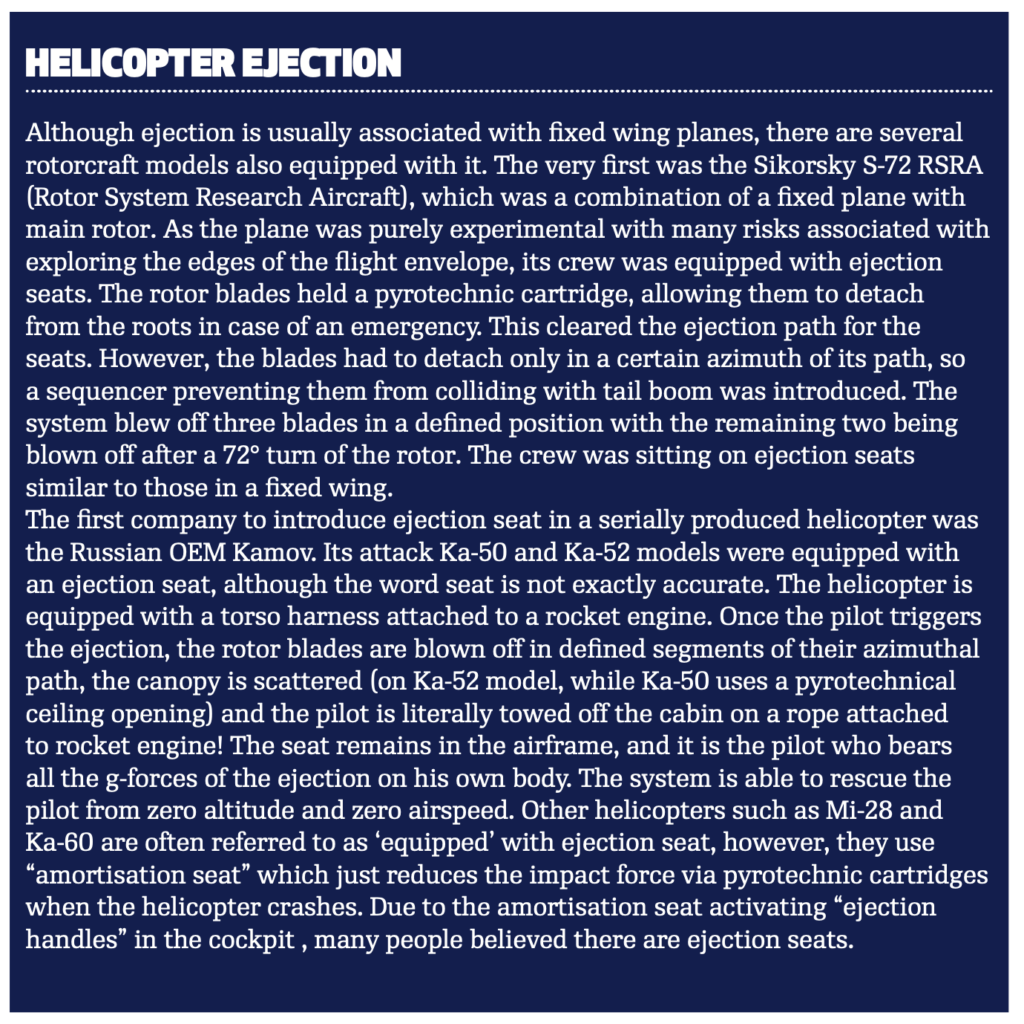
The seat itself is not very comfortable, as the pressure on the spin has to be minimized during the ejection, so the seat cushion is not very soft. Should the plane be equipped with an ejection path clearing mechanism as described above, the seat may usually work in zero-zero conditions, i.e. with zero altitude and zero speed. The upper limits of the ejection easily exceed 1,100km/h and 15,000m, but for such extreme conditions, the overpressure suit and breathing support are essential. The pilot has to wear a special flight suit, which is inflammable and provides protection against burns. Also, the flight helmet must support the ejection as, for example, some items like NVG goggles are exceeding the neck forces and have to be removed prior to ejection. With women entering the military aviation world on a large scale, the seats have to be able to absorb a large span of the pilot´s weight and anthropometric limits. For example, the US requirements now expect the pilots to weigh anywhere between 55 to 120 kg with a height ranging from 1,55m to 1,95m. With such a wide range, the newer seats have adjustable thrust coping with the actual weight. Also, the increasing weight of the pilot helmets (equipped with more and more sensors) means the most recent seats, such as the US ACES 5 type, are equipped with a new passive head and neck system, allowing to cope with the new gear.

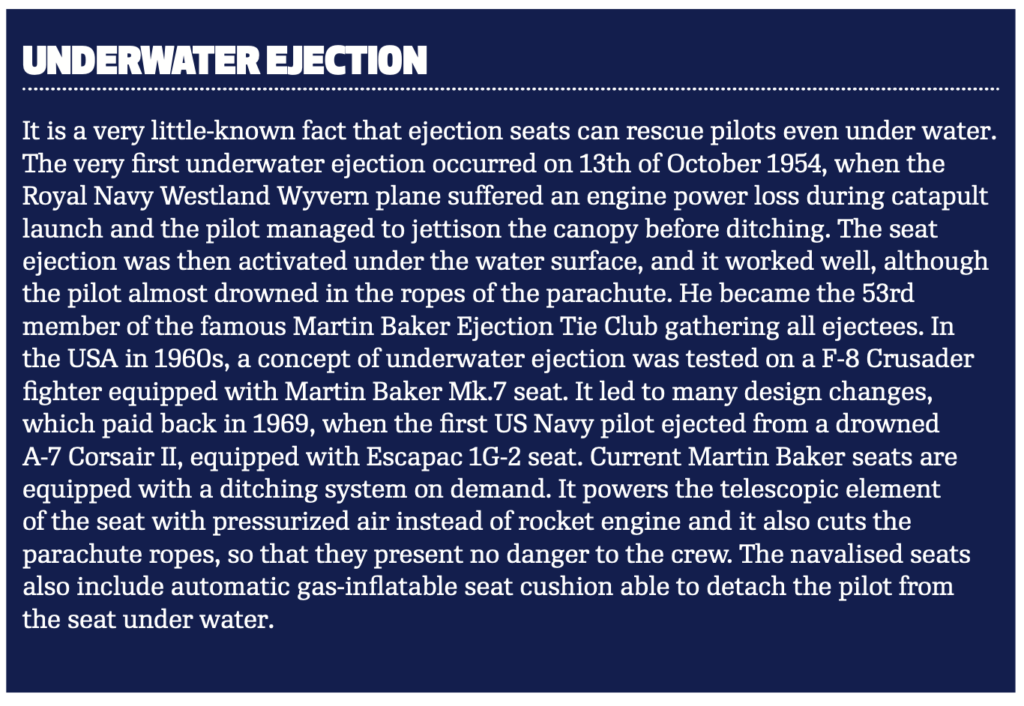
Text by: Jakub Fojtík, Ph.D., LL.M.
Photos by: Martin Baker, UTC, NPP Zvezda, author
